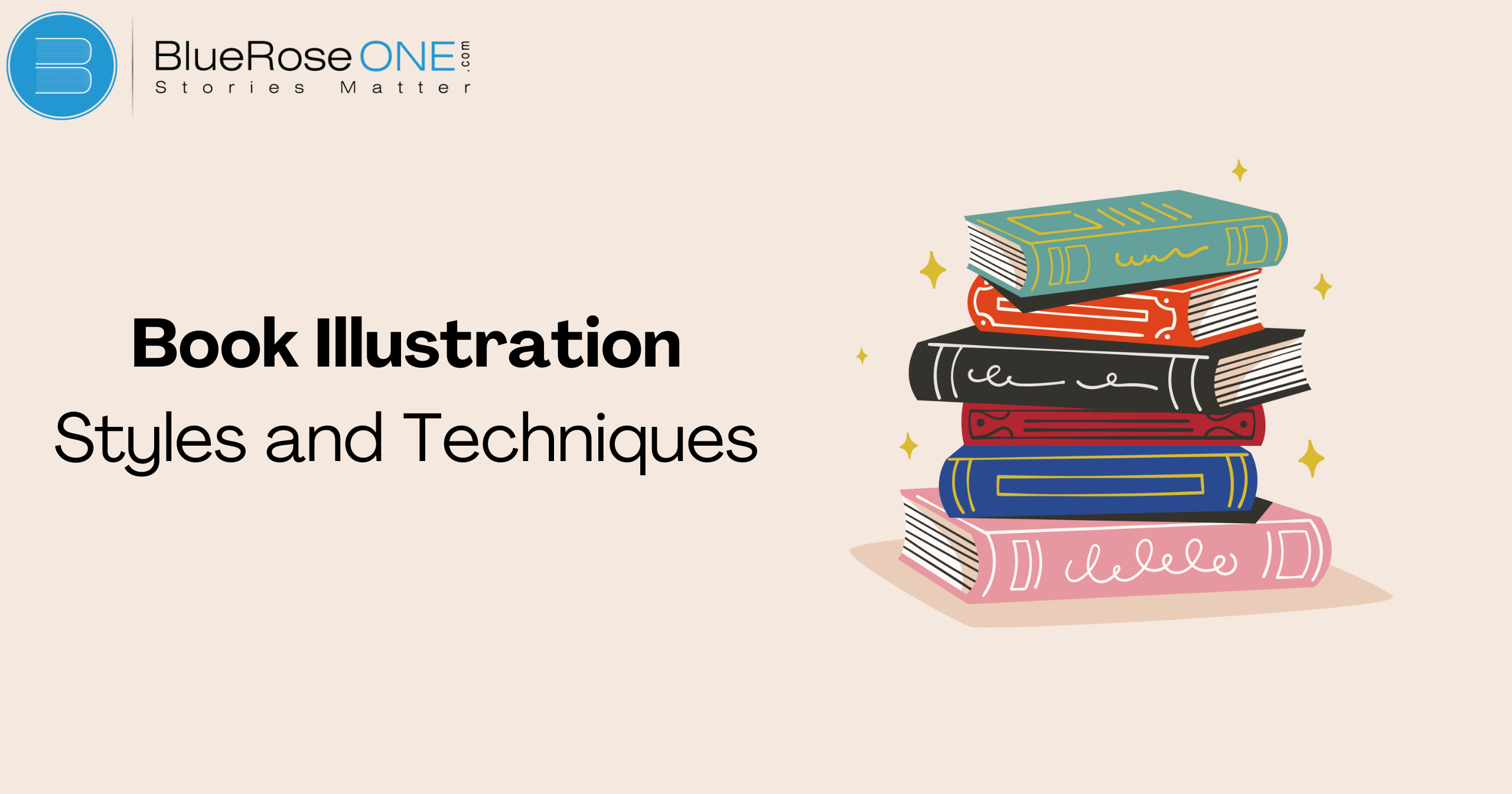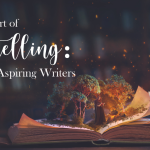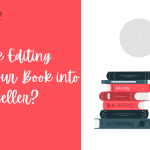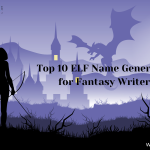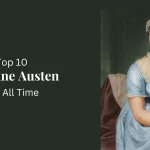The craft of book illustration transforms words into vibrant images that enthral readers of all ages and gives stories life. The craft of book illustration is essential to storytelling, from humorous pictures seen in children’s books to intricate graphics found in fantasy novels. However, what precisely distinguishes a distinctive illustration style, and how can illustrators select the methods that work best for their projects? Now let’s explore the exciting realm of book illustrating styles and methods.
You may also read: The Rise of Shakti by Megha Dinesh: Book Review
Historical Overview of Book Illustration
Early Beginnings
Book illustrations have its roots in ancient cultures, when visual storytelling played a central role in the presentation of culture. Early manuscripts from Egypt, Greece, and Rome frequently included carefully drawn, hand-illustrated images to go along with the text.
Mediaeval illuminated manuscripts, especially those written by monks, had elaborate patterns and vivid hues that brought religious and literary works to life. These early images laid the groundwork for book illustration’s development as an art form and a tool for communication. They were not only ornamental; they also improved comprehension and engagement.
Evolution through the Ages
The art and technology of each era have been reflected in the extraordinary evolution of book illustration across time. Illustrators have continuously pushed the frontiers of their profession, as shown in the exquisite hand-drawn illuminations of mediaeval manuscripts and the meticulous woodcuts of the Renaissance.
The printing press, which was developed in the fifteenth century, transformed the book industry and increased accessibility to images. The introduction of lithography and then photomechanical reproduction in the 19th century greatly changed the field and made it possible for more accurate and diverse forms of artistic expression.
With the advent of digital technology, illustrators can now create and share their work with never-before-seen ease and originality.
Modern Day Illustrations
Modern illustrations are a whole different genre now that digital innovation and traditional artistry are combined thanks to technological breakthroughs. Illustrators can now use a wider variety of styles and approaches since they have access to advanced software and tools.
Richer, more detailed visual storytelling is now possible because of this progress, which has democratized the creative process. Contemporary book illustrations are created to appeal to a wide range of readers and genres, from photo realistic depictions to whimsical, abstract designs, all of which improve the reading experience.
These developments also make it easier to distribute and preserve illustrations, which guarantees the survival of artistic expression in the digital era.
You may also like: Book Writing | 10 Essential Tips for Beginner Book Writing
Types of Book Illustration Styles
In book design, realistic illustration aims to create lifelike representations that reflect the accuracy and detail of the real world. In areas where authenticity is crucial, such historical fiction, biographies, and educational literature, this approach is frequently used.
Artists create illustrations that are nearly photographic in quality by using precise techniques to depict textures, dimensions, and light effects.
A vibrant, immersive experience that can vividly and authentically bring historical events or scientific concepts to life is what realistic artwork does to help readers engage profoundly with the information. The story is improved by this attention to detail, which makes it more interesting and relevant.
Abstract Illustration
Abstract illustration embraces shapes, colours, and forms to communicate ideas, concepts, and emotions while eschewing the limitations of realism. This aesthetic feeds on its capacity to arouse readers’ interest and awe, which frequently results in them interpreting the artwork in their own special and personal ways.
Abstract pictures work especially well in poetry, fantasy, and avant-garde literature genres where the visual depiction of ideas can amplify and enrich the creative possibilities of the story. Abstract pictures elicit a deeper, more contemplative response from readers by emphasising the content of the text rather than its details.
Minimalist Illustration
The strong, modern style of minimalist illustration is defined by its clarity and simplicity. Minimalist illustrations focus on simple shapes, clear lines, and restrained colour palettes to efficiently and concisely communicate their ideas.
This design approach frequently uses negative space to increase visual impact, which makes it a great option for clearly communicating difficult concepts.
Both sophisticated adult literature and children’s books frequently have minimalist drawings, which offer a contemporary style that appeals to a broad readership. They are a timeless and adaptable option in the field of book illustration because of their elegance and simplicity of interpretation.
Surreal Illustration
Readers are drawn into dreamlike worlds where the ordinary becomes extraordinary through surreal illustrations that transcend reality. This aesthetic uses strange juxtapositions, fanciful materials, and abstract ideas to arouse curiosity and amazement.
These surrealist-inspired artworks frequently have weird, amusing settings that defy expectations and surprising combinations. Books that aim to portray intricate, inventive plots or elicit strong emotions are ideal candidates for surreal images.
They not only heighten the ethereal quality of the narrative but also challenge readers to push the limits of their own imagination and ingenuity.
Cartoon Illustration
The lively and energetic style of cartoon illustration is frequently utilised in children’s books and graphic novels. This style easily captures the attention of young readers and effectively portrays emotions through the use of bold lines, vivid colours, and exaggerated features.
Cartoon graphics make storytelling more approachable and captivating by demystifying complicated concepts. By adding personality and humour to their drawings, artists may create endearing figures that captivate viewers.
This lighthearted approach aids in visual storytelling by leading readers through the story with charm and clarity while also providing entertainment. Caricatures, whether humorous or sarcastic, give novels a distinct, vibrant quality.
Fantasy Illustration
Fantasy illustration is regarded as a field where the possibilities are endless in terms of book illustration techniques. With its enthralling writing, readers are whisked away to realms full with fantastical animals, breathtaking scenery, and brave heroes on amazing adventures.
Fantastical worlds are brought to life by skilled fantasy illustrators using vivid colours and minute details, enthralling both young and old audiences. From wacky fairy tales to intense high-fantasy sagas, this genre piques readers’ interest and entices them to immerse themselves in enthralling experiences that transcend the boundaries of reality.
You may also like: Marketing Strategies for Self Published Novels | Get Noticed
Techniques in Book Illustration
Traditional Techniques
Pencil and Ink Drawing
One of the mainstays of conventional approaches in book illustration is the ageless appeal of pencil and ink drawings. Graphite and ink combined on paper reveal a world of fine lines and nuances that may bring stories to life with an unmatched appeal.
While ink adds depth and detail and gives each stroke a sense of permanence, pencil sketches provide a foundation by capturing the essence of form and expression. With the flexibility to experiment with different textures, shading methods, and degrees of complexity, this dynamic pair makes sure that every image has its own distinct visual poetry.
Watercolor Painting
Artists and illustrators alike love watercolor painting for its delicate translucency and ethereal properties. It is a timeless technique. Watercolors are a wonderful method to add depth, passion, and atmosphere to book illustrations, making them come to life.
Painters skilled in this medium have mastered the harmony between spontaneity and control, letting the paint run freely while still producing precise strokes. What was the outcome? illustrations that elicit a sense of life and invite readers into vividly coloured worlds brimming with surprise and creativity.
Oil Painting
Within the field of book illustration, oil painting is a classic method that is valued for its vivid colours and rich textures. In contrast to other media, oil paint has exceptional brilliance and depth, which makes it a popular option for bringing stories to life on canvas.
Oil painting, which has centuries-old roots, has developed into a flexible medium for encapsulating the spirit of stories found in books. Proficiency in this method allows artists to apply layers of colour, combine tones, and illustrate minute details with incomparable richness to the images that grace the pages of books.
You may also like: 10 Effective Strategies to Improve Your Reading Habits
Digital Techniques
Vector Art
Illustrators can use vector art, a strong tool in the world of digital approaches that offers unmatched scalability and precision. Vector art is made up of mathematical equations that determine forms and lines, as opposed to raster images, which are made up of pixels.
Because of its endless scalability without sacrificing quality, this makes it perfect for book drawings that need to be made in a variety of sizes.
Additionally, vector art’s crisp lines and brilliant colours give pictures a contemporary, professional look that enhances readers’ visual storytelling experiences. Illustrators in the digital age have limitless creative options when working with vector art, whether they are creating complex landscapes or amusing figures.
Digital Painting
When it comes to book illustrating styles and methods, digital painting is a flexible and dynamic method. Digital painting, in contrast to conventional techniques, uses specialised equipment and software to produce beautiful images.
With accuracy, artists may use a virtual brush to combine colours and experiment with different textures and effects. Illustrators are empowered to bring their concepts to life with incredible freedom using digital painting, which allows them to explore unlimited possibilities and undo mistakes.
Digital tools provide infinite creative possibilities for book illustration, whether creating imaginary worlds or portraying subtle emotions.
Mixed Media
Digital techniques have brought forth a new era of creativity and invention in book illustration styles and techniques. Mixed media is a witness to this progress.
Through the ingenious fusion of conventional and digital media, mixed media enables artists to create works that are appealing by skillfully fusing hand-drawn sketches, paintings, photos, and digital elements.
This fusion adds dimension and richness to each illustration, which enhances storytelling while also broadening the artist’s arsenal. A world of bright creativity knows no limitations, and mixed media opens access to everything from playful children’s books to complex graphic novels.
You may also like: 5 Key Steps to Successfully Self Publishing Your Novel
You may also like: 20 Satire Examples in Real-World Every Writer Should Know
Choosing the Right Style for Your Book
Considering the Genre
Selecting an appropriate writing style for your book is essential to telling your tale or message clearly. You should match the tone and content of your illustrations to the genre of your book.
For example, whimsical and colourful graphics might work better to engage young readers if you’re authoring a children’s book.
However, to increase tension in a mystery novel, darker, more atmospheric pictures could be preferable. Knowing your genre inside and out can help you choose the graphic style that best fits your story and gives your audience a seamless, engaging reading experience.
Audience Preferences
In the world of book illustration, it’s critical to comprehend the tastes of your audience. Whether you’re writing a suspenseful fantasy epic or a humorous children’s story, you can turn your book from a collection of pages into an engrossing journey by customising your illustration style to appeal to your target audience.
If you are choosing an artistic approach, take your audience’s age range, genre, and cultural background into consideration. Do they gravitate towards detailed, realistic depictions or colourful, cartoonish characters?
You may improve the visual storytelling experience and establish a stronger connection with your readers by matching your illustration style to what the audience expects from you. This will leave a lasting impression.
Author’s Vision
When it comes to book illustration, the author’s vision is like a beacon pointing the way towards the ideal aesthetic. Every writer has a different viewpoint, a certain voice that begs to be represented in pictures as well as words. The tone, atmosphere, and message of the author’s narrative are all embodied in their vision.
The chosen illustration style, whether it be austere and contemplative or whimsical and fanciful, must blend together harmoniously to increase the reader’s sense of immersion in the world the author has created. A skillful dance between respecting the author’s vision and capturing the reader’s imagination occurs while choosing the appropriate style.
Famous Book Illustrators and Their Styles
Beatrix Potter
Renowned for her enchanting paintings, Beatrix Potter transformed children’s literature with her well-known characters, such as Peter Rabbit and Jemima Puddle-Duck. Her quirky style and painstaking attention to detail won over readers all over the world, cementing her legacy as a legendary figure in the book illustration industry.
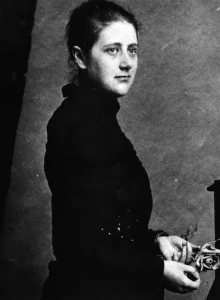
Famous Book Illustrator - Beatrix Potter
Dr. Seuss
With his distinctive style, Dr. Seuss—known for his fanciful and whimsical illustrations—revolutionized children’s reading. His stories came to life thanks to his inventive animals and playful use of vivid colours, enthralling readers of all ages. Readers and artists of all generations are still motivated by the classic images of Dr. Seuss.

Famous Book Illustrator - Dr. Seuss
Quentin Blake
Few names in the world of book illustration arouse as much joy and nostalgia as Quentin Blake. Blake’s illustrations, which are renowned for their lively figures and quirky manner, bring treasured classics like Roald Dahl’s tales to life and win people over with each brushstroke.

Famous Book Illustrator - Quentin Blake
Maurice Sendak
With his own style, children’s literature titan Maurice Sendak transformed book illustration. The world was enthralled by Sendak’s unique fusion of whimsy and darkness in “Where the Wild Things Are,” his masterwork. His elaborate drawings take viewers to magical places, cementing his status as a timeless legend in the storytelling industry.

Famous Book Illustrator - Maurice Sendak
Eric Carle
Renowned for his unique artistic style, Eric Carle is a legendary personality in the children’s book industry. Carle’s vivid and rich drawings pop off the page thanks to her use of collage methods, enthralling young readers everywhere. Carle’s classic works, such as “The Very Hungry Caterpillar” and “Brown Bear, Brown Bear, What Do You See?”, have delighted audiences for decades.

Famous Book Illustrator - Eric Carle
The Creative Process of Book Illustration
Conceptualization
The process of conceptualization, which gives ideas form and brings stories to life, is the foundation of book illustration. This stage involves the artist’s ideation, sketching, and refining of their vision, transforming the written words of the author into visually compelling images. This crucial phase establishes the foundation for the illustrator’s artistic expression and sets the tone for the entire creative process.
Sketching and Storyboarding
In the field of book illustration, storyboarding and sketching are essential components of the creative process. Illustrators can develop compositions, plan out the narrative flow of the story, and visualise concepts at these early stages of the process. Every brushstroke brings the imagined story to life, whether it be in broad strokes or intricate sketches.
Refining and Finalizing
Within the complex world of book illustration, the stage of refining and finalising represents the achievement of creative vision and painstaking detail. This crucial stage entails perfecting each brushstroke, colour, and composition to make sure the artwork flows naturally with the story. Here, creativity and accuracy combine to create enduring visual stories.
Challenges in Book Illustration
Staying Original
It’s hard to stay unique in the realm of book illustration when there are so many inspirations and trends. A sharp eye and an unwavering dedication to one’s own artistic voice are necessary for finding the right balance between inspiration and imitation. Accepting uniqueness guarantees that every picture speaks to readers authentically and makes an impact.
Balancing Author’s Vision with Personal Style
In book illustration, it can be difficult to strike a balance between incorporating one’s own style and respecting the author’s vision. Although the illustrator must stay true to the story’s core, adding their own artistic flair gives the pages life and promotes a harmonious fusion of originality and accuracy.
Keeping Up with Trends
Keeping up with trends in the often changing field of book illustration is both a challenge and an opportunity. Illustrators operate in a dynamic area where preferences and trends evolve, producing everything from complex digital artworks to simple designs. Remaining relevant in this creative field requires striking a balance between classic appeal and modern flair.
Conclusion
Book illustration is a dynamic, ever-evolving creative medium that draws readers in and improves storytelling. Illustrators can use a wide range of tools and styles, from conventional procedures to contemporary digital ones. Illustrators may create powerful and unforgettable artwork that brings stories to life by learning and mastering these styles and approaches.
Frequently Asked Questions
To become a book illustrator, start by developing your artistic skills and building a strong portfolio. Networking with authors and publishers and continuously improving your craft are also important steps.
Popular software for digital book illustrations includes Adobe Illustrator, Photoshop, and Procreate. These tools offer a range of features and capabilities suitable for various styles and techniques.
Yes, many illustrators use a combination of traditional and digital techniques. This approach allows for greater flexibility and creativity in their work.
While following trends can help illustrators stay relevant, it is also important to maintain a unique style. Balancing current trends with personal creativity is key to standing out.
Children’s book illustrations are typically more colorful, simple, and engaging, while adult book illustrations may be more complex, detailed, and suited to the story’s tone and themes.

